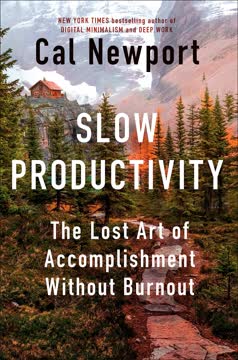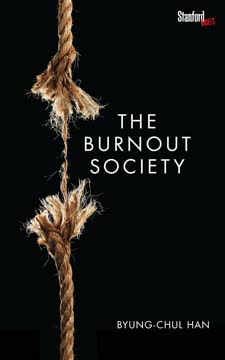Key Takeaways
1. Swedenborg: The Scandinavian Polymath Before the Seer
In our own time of specialization, such a polymathic career is a bit dizzying and, unfortunately, suspect.
A Renaissance mind. Before his spiritual transformation, Emanuel Swedenborg was a towering figure of the European Enlightenment, a true polymath whose interests spanned science, engineering, politics, and even poetry. He was a respected member of the Swedish elite, serving in Parliament and on the Board of Mines.
Inventor and scientist. Swedenborg's early career was marked by ambitious scientific projects and inventive designs that anticipated modern technology. His proposals included plans for:
- Submarines and aircraft
- Machine guns and aqueducts
- Mechanical musical instruments and carriages
Voracious learner. Driven by a "voracious quest for knowledge," Swedenborg traveled extensively across Europe, seeking out leading scientists and craftsmen. He immersed himself in anatomy, mathematics, astronomy, and mechanics, demonstrating a remarkable ability to quickly master diverse fields.
2. The Scientific Quest to Locate the Soul
For the next decade Swedenborg intended to do just that, his aim being to produce a proof of the soul that the senses themselves would have to accept.
Bridging finite and infinite. Swedenborg's major scientific works, like The Principia and The Economy of the Animal Kingdom, were part of an ambitious project to find a scientific basis for the soul and the connection between the material world and its infinite source. He sought to understand how the physical body could be animated by an immaterial force.
Anticipating neuroscience. Through meticulous study of anatomical literature, Swedenborg made groundbreaking insights into the brain and body, anticipating discoveries made centuries later. His contributions included:
- Recognizing the cerebral cortex as the seat of higher functions
- Identifying the importance of neurons
- Describing the motion of the brain coinciding with respiration
- Postulating the existence of cerebrospinal fluid
Limits of materialism. Despite his rigorous scientific approach, Swedenborg recognized that purely materialist methods were insufficient to grasp the essence of life and consciousness. He argued for a "formative substance or force" guiding biological development, a concept that challenged the prevailing mechanistic view and foreshadowed later vitalist and morphogenetic field theories.
3. A Harrowing Journey Through the Inner Landscape
I, in spiritual things, am a stinking corpse.
Profound psychological crisis. Swedenborg's mid-fifties were marked by intense psychological and spiritual turmoil, meticulously documented in his Journal of Dreams. This period was characterized by radical mood swings, self-recrimination, and a deep sense of sinfulness, reflecting a classic enantiodromia where his self-perception turned into its opposite.
Dreams as spiritual guides. Unlike Freudian interpretations, Swedenborg saw his dreams as purposeful messages from the soul, guiding him toward spiritual growth and revealing his inner state. These dreams were often harrowing, filled with imagery of:
- Being trapped or falling into abysses
- Struggling with serpents representing worldly temptations
- Experiencing physical uncleanness and foul odors
Facing self-love. The core struggle during this crisis was confronting his own ambition, ego, and "self-love," which he came to see as the primary obstacle to spiritual progress. This period was an intense process of "vastation," an emptying of the ego to become open to divine influx.
4. The Divine Commission and the Shift in Focus
That same night were opened to me so that I became thoroughly convinced of their reality, the worlds of spirits, heaven, and hell, and I recognized there many acquaintances of every condition in life.
The pivotal encounter. The crisis culminated in a series of powerful experiences, including a vision of Christ in April 1744. This encounter, which Swedenborg later described as a direct commission from the Lord, marked the definitive turning point, shifting his life's work from scientific inquiry to the revelation of spiritual truths.
Abandoning worldly pursuits. Following this divine command, Swedenborg consciously gave up his scientific ambitions and dedicated himself entirely to his spiritual mission. He resigned from the Board of Mines, declining a promotion, to devote his time to exploring and writing about the spiritual realms and the true meaning of Scripture.
A new reality. The encounter opened Swedenborg's "bodily eyes" to the spiritual world, allowing him to converse with angels and spirits in a state of perfect wakefulness. This was not merely an internal psychological shift but, for Swedenborg, a literal opening of perception to a previously unseen reality.
5. Mapping the Realms of Altered Consciousness
Swedenborg explored the hypnagogic state more than anyone else has before or since.
Beyond ordinary perception. Swedenborg's ability to enter and navigate altered states of consciousness was central to his spiritual experiences. He was particularly adept at the hypnagogic state, the threshold between waking and sleeping, where he could observe inner processes with conscious awareness.
A phenomenology of sight. Swedenborg meticulously categorized different types of "sight" or visionary states, demonstrating a keen observational capacity even amidst extraordinary experiences. These included:
- Lucid dreams (sight during sleep)
- Eidetic imagery (vivid vision with closed eyes)
- Representative vision (seeing spiritual things with open eyes, often "obscure")
- Full separation from the body (entering spiritual worlds entirely)
Sanity amidst visions. Despite the extraordinary nature of his experiences, Swedenborg maintained his outward composure and continued to function effectively in society. His ability to meticulously describe and categorize these states, coupled with his continued engagement in professional and social life, suggests a unique form of consciousness rather than simple madness, as some contemporaries alleged.
6. The Doctrine of Correspondences: Reading the World as Divine Language
The whole natural world corresponds to the spiritual world—not just the natural world in general, but actually in details.
The key to Scripture. Swedenborg's central theological insight was the Doctrine of Correspondences, which posits a direct, symbolic link between everything in the natural world and truths in the spiritual world. He believed the Bible was written in this code, revealing spiritual realities through earthly symbols.
As above, so below. This doctrine is a re-articulation of the ancient hermetic axiom "as above, so below," suggesting that the physical universe is a reflection or effect of the spiritual realm, its underlying cause. Understanding these correspondences allows one to "read" the natural world as a language revealing divine truths.
Influence on art and thought. While intended as a key to biblical exegesis, Swedenborg's doctrine profoundly influenced later artists and thinkers, particularly the Symbolists. Figures like Baudelaire used the idea of correspondences between sensory experiences (perfumes, colors) to suggest a deeper, unseen reality behind the material world, albeit in a more fluid and less systematic way than Swedenborg.
7. Heaven and Hell: States of Being, Not Just Places
In a very real sense, heaven and hell exist within our own consciousness.
Inner realities externalized. Swedenborg's most famous work, Heaven and Hell, describes the afterlife realms not as places of arbitrary reward or punishment, but as states of being that are the external manifestation of souls' inner affections and choices made during life. Souls gravitate to the realm that corresponds to their true nature.
Geography of the soul. The landscapes of heaven and hell are depicted as concrete environments (gardens, houses, cities, wastelands, brothels), but these are symbolic representations of the inhabitants' spiritual states. Heaven is characterized by beauty, order, and productive activity ("uses"), while hell is marked by squalor, conflict, and self-love.
The world of spirits. Between heaven and hell lies an intermediate realm, the world of spirits, where souls first arrive after death. Here, they gradually shed earthly pretenses and confront their true affections, preparing them to move towards the state (heaven or hell) that aligns with their deepest loves.
8. Angels as Perfected Humans and the Density of Spiritual Language
Angels can say more in a minute than many can say in half an hour.
Transformed human souls. Swedenborg's angels are not a separate creation but are human souls who have achieved a state of complete correspondence between their inner and outer selves. They live active, purposeful lives in heaven, engaging in work, social interaction, and even conjugial (marital) love.
Language of wisdom. Angelic language is described as fundamentally different from human speech, possessing an extraordinary density of meaning. A single angelic word or thought can convey concepts that would require thousands of human words or pages of writing, reflecting the angels' elevated state of consciousness and understanding.
Ineffability and understanding. Swedenborg noted the difficulty of recalling or articulating angelic communications upon returning to his ordinary state, not because the content was inherently ineffable, but because human language and intellect are too slow and limited to grasp the rapid, multi-layered insights of the spiritual realm. This echoes the experiences of other mystics who describe the overwhelming nature of spiritual illumination.
9. Unusual Abilities: Clairvoyance and Communication with the Dead
No one but God knows this secret.
Beyond the ordinary senses. Swedenborg was renowned in his lifetime for seemingly paranormal abilities, including clairvoyance and the ability to communicate with the deceased. These were not sought-after powers but appeared as a byproduct of his spiritual opening.
Documented incidents. Several famous anecdotes attest to his abilities, investigated even by figures like Immanuel Kant:
- Describing a fire in Stockholm from 300 miles away in real-time.
- Revealing a secret known only to the Queen of Sweden and her deceased brother.
- Locating a lost receipt for a widow by conversing with her dead husband.
A part of human nature? While extraordinary in their acuity, Swedenborg's abilities suggest that such phenomena might be latent aspects of human consciousness, perhaps more accessible in altered states or to individuals with a heightened sensitivity to the subtle connections between the physical and spiritual realms.
10. An Enduring Influence on Thinkers and Artists
Swedenborg was not only a central figure in the Western esoteric tradition; he was also crucial to much of mainstream Western culture as well.
A hidden source. Despite his relative obscurity today compared to figures like Newton or Kant, Swedenborg exerted a profound, often unacknowledged, influence on a wide array of later thinkers, writers, and artists across various disciplines.
Diverse admirers. His readers and admirers included:
- Philosophers: Kant (critically), Emerson, William James
- Poets: Blake, Goethe, Baudelaire, Yeats, Rilke
- Writers: Balzac, Poe, Strindberg, Dostoevsky, Helen Keller
- Psychologists: Jung, Van Dusen
- Scientists: Arrhenius, Bohm (indirectly)
Legacy of ideas. Swedenborg's ideas on correspondences, the nature of consciousness, the structure of the universe, and the reality of the spiritual world continue to resonate and find echoes in modern science, psychology, and philosophy, suggesting his vision was remarkably ahead of its time and remains a rich source for exploring the mysteries of reality and the human soul.
Last updated:
Review Summary
The reviews for Swedenborg are generally positive, with readers appreciating the concise introduction to Swedenborg's life and ideas. Many found it well-written and accessible, praising Lachman's insights and connections to other thinkers. Some readers wished for more depth on Swedenborg's visions and writings, while others felt the comparisons to other philosophers were unnecessary. Overall, reviewers found it a good starting point for those interested in Swedenborg, though some suggested more comprehensive sources for deeper study.
Similar Books










Download PDF
Download EPUB
.epub digital book format is ideal for reading ebooks on phones, tablets, and e-readers.













